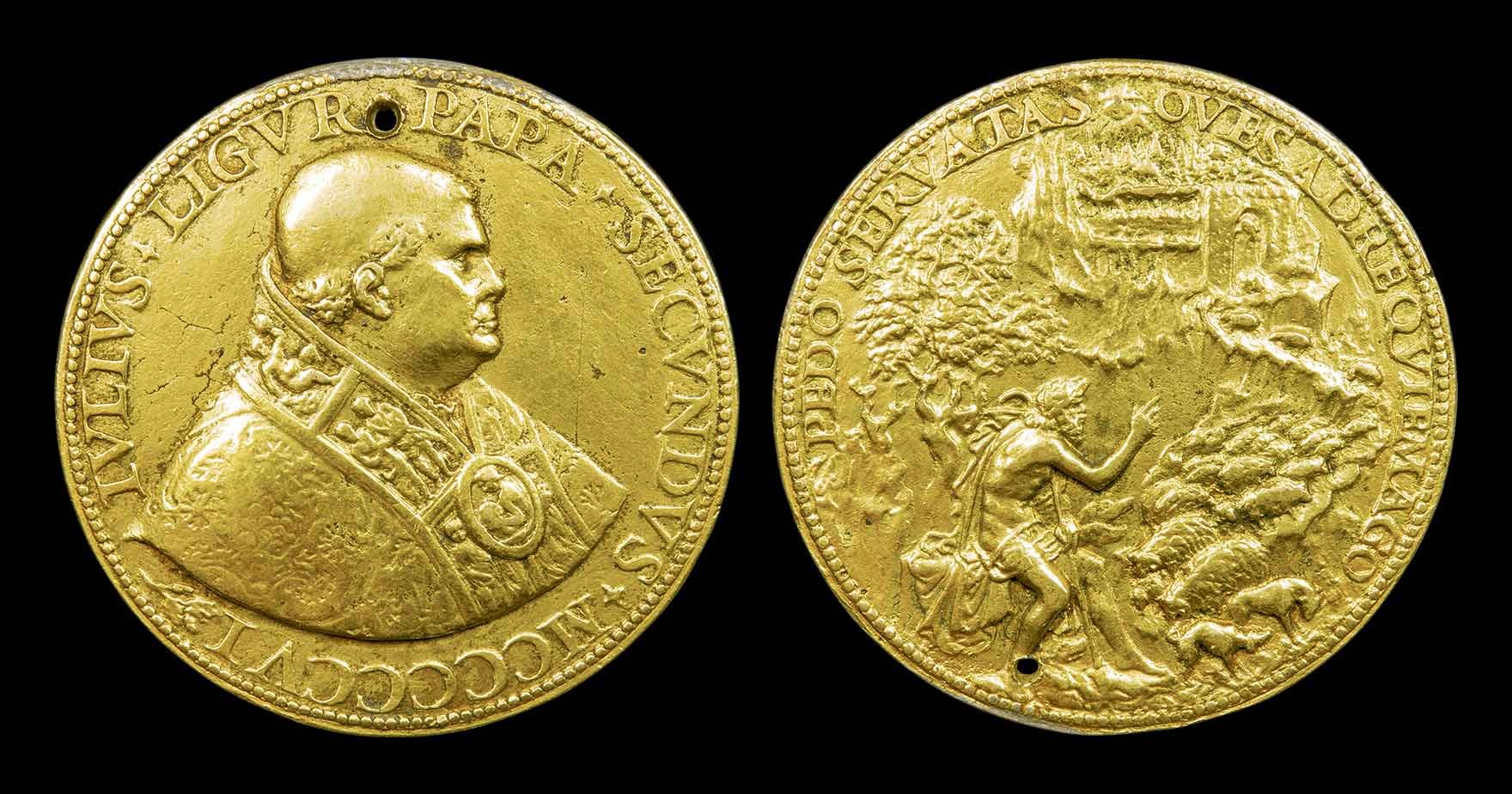By Maxwell Wilkens
Pope Julius II was infamous for his warmongering against various European powers during his early 16th-century papacy. His tendency to join the infantry on the front lines earned him the nickname “The Warrior Pope.”
But the coins and medals he commissioned in his image told a far different story, portraying Julius II as a pacifist, art historian James Fishburne told a UC Santa Barbara audience. “The pontiff relied on numismatic media to essentially counterfeit a history of his reign,” said Fishburne, director of the Forest Lawn Museum in Glendale, California.
Fishburne’s research and curatorial work focuses on Roman, Renaissance, and Baroque art. He spoke on the use of portrait medals and coins to craft 15th and 16th-century papal narratives, at an event hosted by the Art, Design and Architecture Museum, as part of a lecture series on “God, Glory, and Spirituality.” The series is connected with the “Sigmund Morgenroth Collection” exhibition on display at the entrance to the museum, which features a collection of ancient medals and plaquettes from Italy, Germany, The Netherlands, and France.
James Fishburne, art historian and director of the Forest Lawn Museum, spoke to a Santa Barbara Audience on the use of medals and coins to shape the histories of 15th and 16th-century Popes.
Fishburne said portrait medals became a significant way to create historic narratives. “These medals, and the ensuing genre, were developed under the near universal admiration for, and extreme interest in, ancient Roman coins,” he said.
Italian religious leaders in the 15th and 16th centuries discovered Roman coins, and other ancient artifacts, underneath the foundations of collapsed buildings. They would place their own portrait medals in urns beneath their places of worship in order to infuse their image with the power of antiquity.
These urns, he said, acted like time capsules, a way to “communicate with the future, in a format inspired by the past, by offering an idealized view of the present.”
A portrait medal of 16th century Pope Julius II, left, and, on the back of the medal, a scene depicting a peaceful shepherd.
Pope Julius II was both successful and unsuccessful in creating an idealized narrative in his favor, Fishburne concluded. Many of his contemporaries thought it was inappropriate for the Pope to stand on the front lines of the battlefield, so he created portrait medals depicting himself as a peaceful shepherd, which may be part of the reason why he was never deposed during his reign. “On the other hand, to this day, he is known as the Warrior Pope,” Fishburne pointed out.
The next event in the “God, Glory, and Spirituality” series will explore portrait medals of women during the Renaissance. The lecture, which is free and open to the public, will take place on Thursday Nov. 17, at 5 p.m. at the Art, Design and Architecture Museum.
Maxwell Wilkens is a third-year UC Santa Barbara student majoring in Communication and Music Studies. He is a Web and Social Media Intern for the Division of Humanities and Fine Arts.



